The Pioneering Women of Electronic Music
As part of Women’s History Month, we are shining a light on some of the amazing women who revolutionized & defined the past, present & future of electronic music. Accompanying this article is a playlist of music from the featured composers, as well as some of our other favorite tracks by women making electronic music. If you want to learn more about these pioneers, we highly recommend the film, Sisters With Transistors.
“We women were especially drawn to electronic music when the possibility of a woman composing was in itself controversial. Electronics let us make music that could be heard by others without having to be taken seriously by the male dominated establishment."
CLARA ROCKMORE
Clara Rockmore (1911 – 1998) was a classically trained Lithuanian virtuoso theremin player, one of the very first electronic instruments. She performed as a soloist with the New York Philharmonic, the Philadelphia Orchestra, and the Toronto Symphony Orchestra. As well as mastering the instrument, she participated in its design, helping Leon Theremin, its inventor, fine-tune earlier models to improve both range and precision. Audiences around the world were amazed by the seemingly impossible instrument which is played without any physical contact. Rockmore was one of the first artists to bring electronic music to concert hall prestige. “I had to make – and then meet – my own standards; I had to win the public over into thinking of the theremin as a real, artistic medium” Rockmore said.
DAPHNE ORAM
British composer and inventor Daphne Oram (1925 - 2003) began working at the BBC as a sound engineer at the age of 18. A founding member of the BBC’s Radiophonic Workshop, which became one of the seminal environments for innovation and sonic exploration, she was amongst the earliest British composers to produce electronic sounds and compose music from field recordings. This new way of thinking about & making music was called Musique Concrète, a term coined by Pierre Schaeffer, and is part of the ancestry of today’s electronic music. While this method of composition was groundbreaking, it was also extremely difficult to achieve and involved a lengthy process of tape splicing. In the mid-1950’s Oram began to experiment with designs for a visual interface for composing, called the Oramics Machine. She developed technology that scanned and read hand-drawn waveforms and sequences of information for musical pitch and dynamics. While this invention was never commercially released, it can be seen as a forerunner for MIDI & the digital audio workstation.
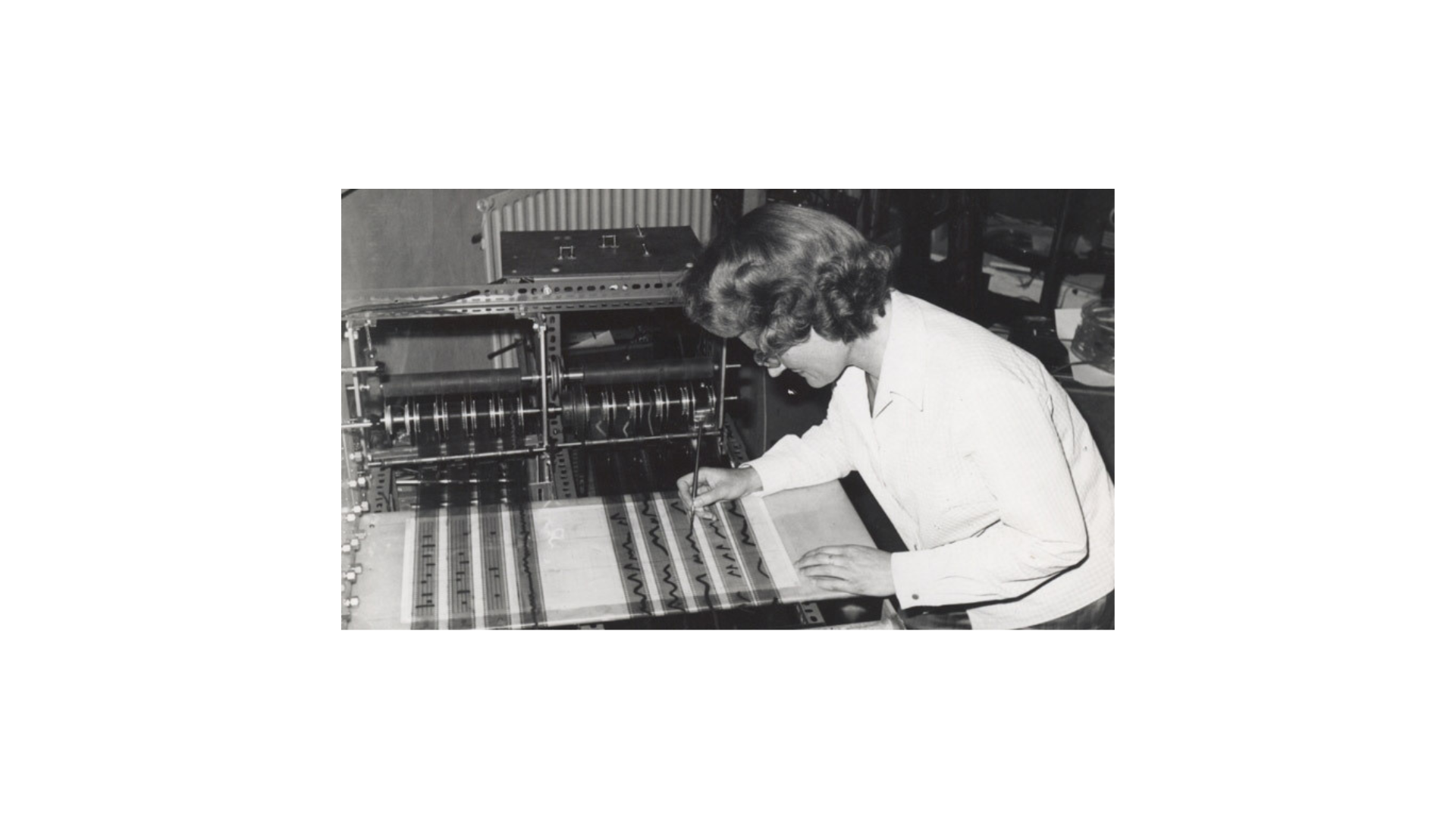
Daphne Oram. Source: The Daphne Oram Trust & Collection
BEBE BARRON
Bebe Barron (1925 – 2008) was an American electronic music composer. Her work, as part of a duo with her husband Louis, is certainly a contender for one of the most idiosyncratic tape music movements. When they married in 1947, they received one of the earliest tape recorders that used magnetized plastic tape and went on to compose the first electronic music for magnetic tape in the United States, titled Heavenly Menagerie. After moving to New York, they founded one of the first electro-acoustic studios in Greenwich Village in 1949, where they recorded many artists, from the likes of Tennessee Williams to John Cage. By 1956, the duo had created the world’s first electronic film score for Forbidden Planet, made entirely from “bleeps blurps, whirs, whines, throbs, hums, and screeches” generated by their D.I.Y. electronic circuits. They pioneered layering manipulated sounds from several different tape machines, a technique that is fundamental to multi-tracking practices in modern studios.
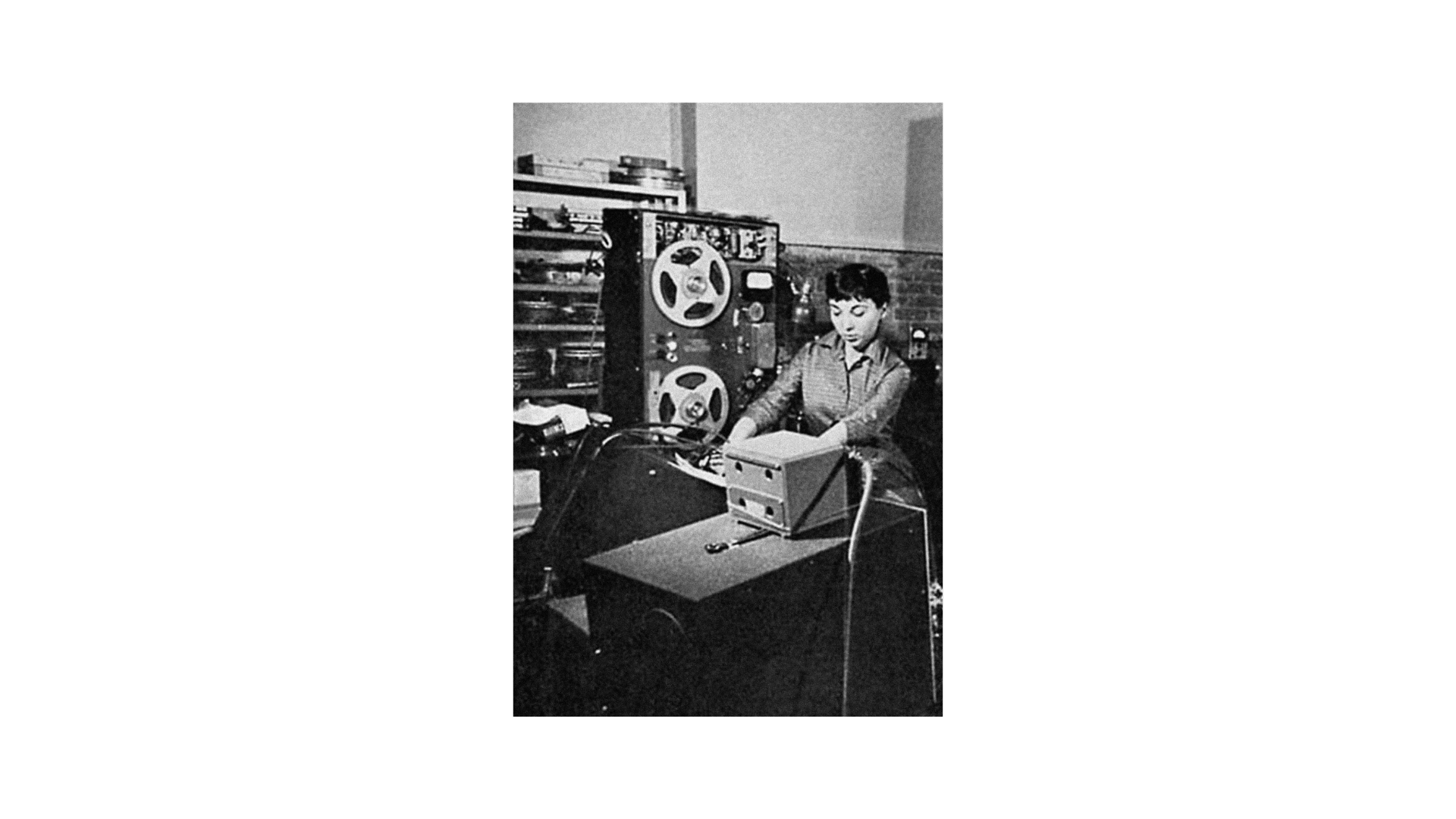
Bebe Baron. Source: Publicity Still for Forbidden Planet
PAULINE OLIVEROS
Composer, accordionist & humanitarian Pauline Oliveros (1932 - 2016) began exploring tape and electronic music techniques in the late 1950s. A founding member of the influential San Francisco Tape Music Centre alongside Ramon Sender and Morton Subotnick, her compositions introduced meditative and ritualistic practices while exploring deep and existential ideas. She pursued themes of gender inequality with tenacity and led progress for women composers. An essay she wrote for the NY Times in 1970 started with a provocative question – “Why have there been no ‘great’ women composers?” She worked, as she says, “To create an atmosphere of opening for all to be heard, with the understanding that listening is healing.” This idea of listening as healing is a core tenement of her musical philosophy.
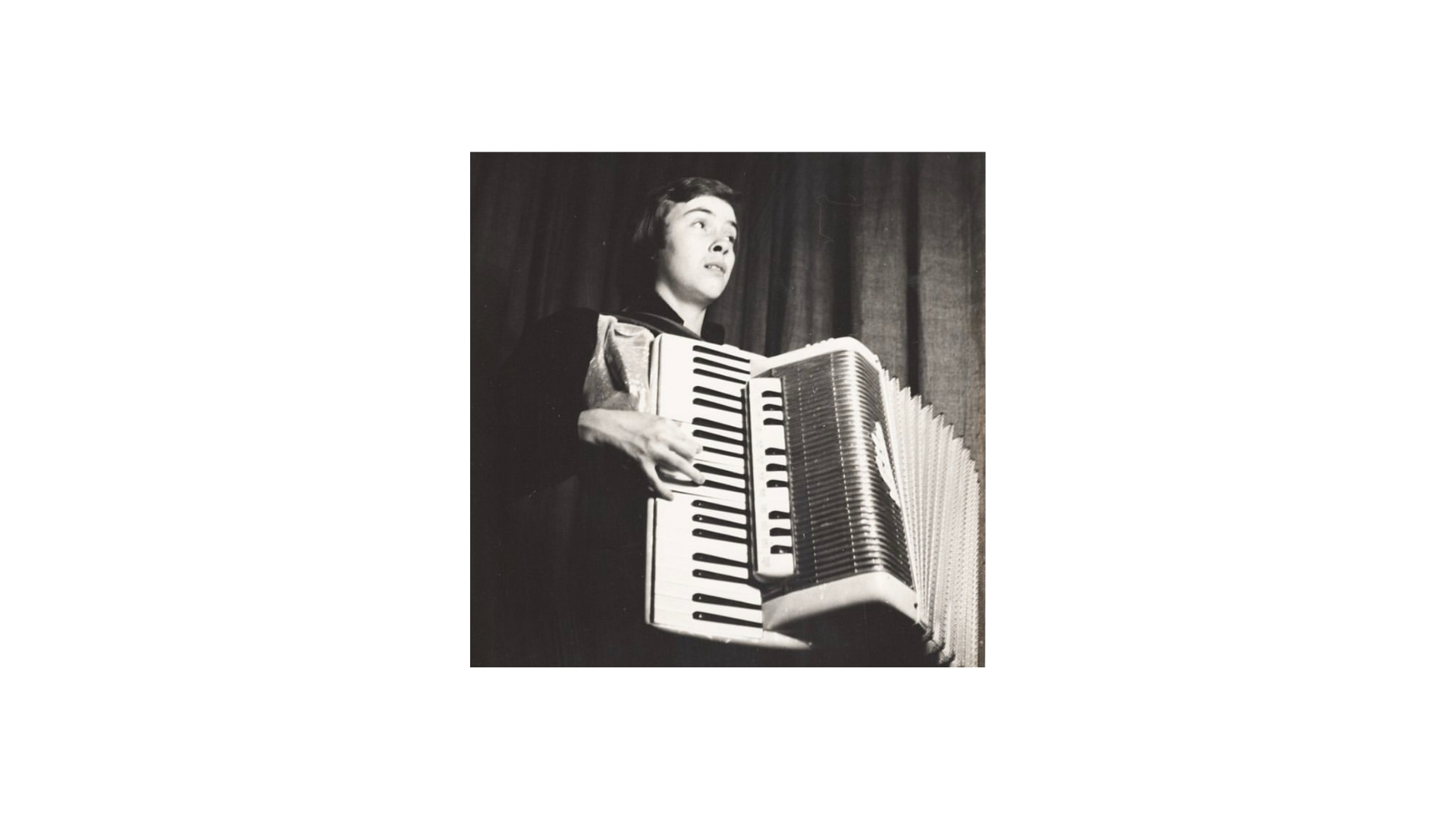
Pauline Oliveros. Source: The Story Of Pauline Oliveros Film
DELIA DERBYSHIRE
In 1960, the British composer and mathematician Delia Derbyshire (1937 – 2001) joined the BBC as a trainee studio manager. While she excelled in this role, she asked for a transfer to the fledgling Radiophonic Workshop, which happened to be under the same operational umbrella. As a Cambridge graduate who studied music & mathematics, Derbyshire was the first person with higher music qualifications to work at the Radiophonic Workshop, during its golden age. However, as she wasn’t supposed to be doing music, much of her early work remained anonymous under the umbrella credit ‘special sound by BBC Radiophonic Workshop‘.
Her electronic arrangement of the Dr Who Theme in 1963, one of the first entirely electronic music pieces used on television, is a cult icon. Through her work for Dr Who, Derbyshire brought the early electronic techniques of Musique Concrète and tape manipulation to the masses. She famously made music with a green lampshade, found sonic inspiration from the air raid sirens she heard as a child during the bombings of her hometown Coventry, and some of her early experiments in the 1960s can arguably be viewed as having the same musical characteristics of what came to be described as techno 20 years later.
Derbyshire went on to make music for hundreds of radio & television productions and earned a reputation for being capable of the impossible. Though, at times, she was also told by the workshop that her music was ‘too lascivious for 11-year-olds‘ and ‘too sophisticated for the BBC2 audience‘. She went on to explore other mediums & collaborations in theater and film, as well as having musical encounters with artists like Paul McCartney, Karlheinz Stockhausen, George Martin, Pink Floyd, Brian Jones, Anthony Newley, and Harry Nilsson. Her infectious enthusiasm and ingenious creativity have influenced the minds of many generations of artists from The Chemical Brothers, Aphex Twin, and The Beatles to artists like Onethrix Point Never & Björk.
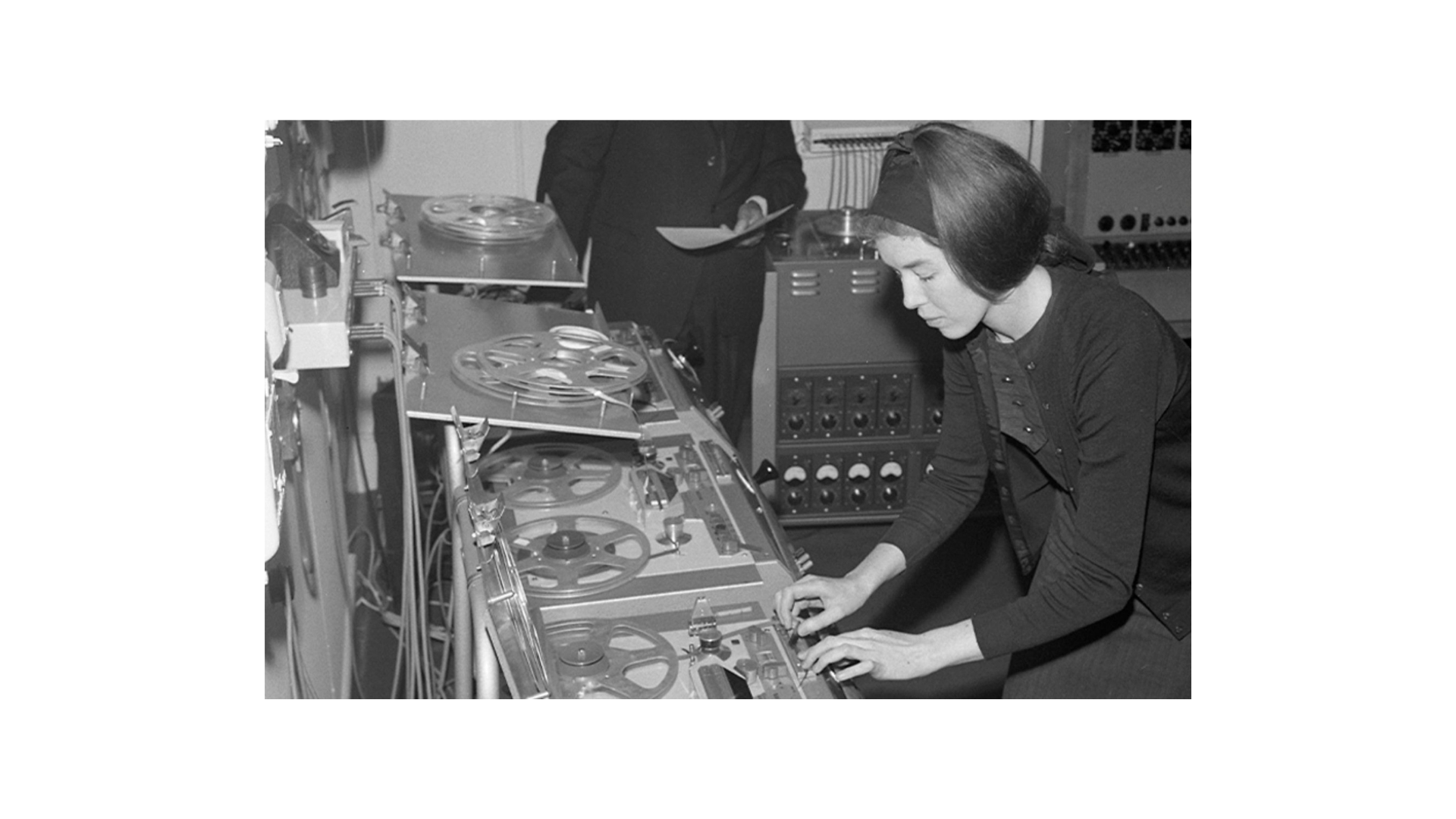
Delia Derbyshire. Source: Delia Derbyshire Archive, June 1965
MARYANNE AMACHER
Maryanne Amacher (1938 – 2009) was an American electronic composer and sound artist with a reputation for extreme loudness and a passion for science. She was a student of the legendary Karlheinz Stockhausen and a collaborator of John Cage and Merce Cunningham.
She is best known for working extensively with psychoacoustic phenomena in which the ears themselves produce sound, also known as ‘auditory distortion products‘ i.e. sounds generated inside the ear that are audible to the hearer. The subtitle of her first album Sound Characters (Making the Third Ear) references this phenomenon. She describes this subjective experience in the following passage:
"When played at the right sound level, which is quite high and exciting, the tones in this music will cause your ears to act as neurophonic instruments that emit sounds that will seem to be issuing directly from your head … (my audiences) discover they are producing a tonal dimension of the music which interacts melodically, rhythmically, and spatially with the tones in the room. Tones ‘dance’ in the immediate space of their body, around them like a sonic wrap, cascade inside ears, and out to space in front of their eyes … Do not be alarmed! Your ears are not behaving strange or being damaged! … these virtual tones are a natural and very real physical aspect of auditory perception, similar to the fusing of two images resulting in a third three dimensional image in binocular perception … I want to release this music which is produced by the listener…”

Maryanne Amacher. Source Capp Street Project Archive at California College of the Arts Libraries
WENDY CARLOS
Wendy Carlos (1939-present) is one of the most important living composers in the history of electronic music. Having graduating twice from Brown University studying both Music & Physics, she went on to study Music Composition at Princeton University before becoming a Master of Music at Columbia University.
During her time at Columbia, Carlos met Robert Moog and developed a career-defining partnership with the creator of the first commercial modular synthesizer. Carlos offered musical and technical advice to Moog as he developed the instrument that would revolutionize music in the 1960s. The Moog synthesizer quickly became part of the pop revolution and spawned new genres of progressive and electronic music. “In my entire lifetime, I’d only seen a very few people who took so naturally to an instrument as she did to the synthesizer,” Moog told People magazine. “It was just a God-given gift.”
Moog credited Carlos with originating many features of the synthesizer that became part of the final production, including the touch-sensitive keyboard, a portamento control, a fixed filter bank, and a 49-oscillator polyphonic generator bank that could create chords and arpeggios.
In 1968, & in collaboration with her producer Rachel Elkhind, Wendy took one of Moog’s synths, an instrument unknown until then, and electronically reproduced the six Brandenburg Concerts of Johann Sebastian Bach, and titled it Switched-on Bach. The record hit platinum, propelled the Moog synthesizer to the masses, and earned Carlos three Grammy awards - making her the first trans woman ever to win at the prestigious awards ceremony.
She went on to compose the score for Stanley Kubrick’s iconic 1971 film, A Clockwork Orange, as well as features on his 1980 classic, The Shining, & the score for Disney’s 1982 infamous science fiction action adventure, Tron.

Wendy Carlos. Source: GAB Archive - Redferns
ELIANE RADIGUE
French composer Eliane Radigue (1932 - present) first discovered electronic music on a radio show in the 50s. Shortly thereafter she began an apprenticeship at Studio d’Essai in Paris with Pierre Schaeffer and Pierre Henry, the founders of Musique Concrète.
Around 1970, Radigue created her first synthesizer-based music in a studio she shared with Laurie Spiegel on a Buchla synthesizer. She talks about the slow, purposeful “unfolding” of sound through analogue synthesizers and magnetic tape. She felt this music to be closer to the minimal composers of New York at the time than to the French Musique Concrète composers who had been her previous allies.
She explored various Buchla and Moog synths before finding the ARP 2500 synthesizer, an instrument that would define her career for the next 25 years, on which she forged her characteristic sound, beginning with Adnos I (1974). Radigue’s haunting long duration compositions are expressions of deep reflections on sound and listening.

Eliane Radigue. Source: Archiv Eliane Radigue
SUZANNE CIANI
Suzanne Ciani (1946 - present) is a five-time Grammy nominee and electronic music pioneer. After graduating from Berkeley, Ciani found a job with Buchla and Associates, one of the most influential synthesizer creators, to earn enough money for a Buchla synthesizer of her own, the Buchla 200. In her own words she, “Sat and soldered joints and drilled holes for three dollars an hour. When the synthesizers were finished, tested and shipped off, I felt as though I were losing children“.
In grad school in Berkeley, Ciani became entranced with the ability to make music on machines and devoted herself to the Buchla synthesizers for the next two decades, as well as pioneering live electronic performances in quadrophonic sound. Her ongoing, prolific career as an independent artist began by scoring TV commercials and films, and crafting iconic sounds for some of America’s largest companies through the 70’s and 80’s. The sound effect of a Coca-Cola bottle being opened and poured is one of her most famous achievements.
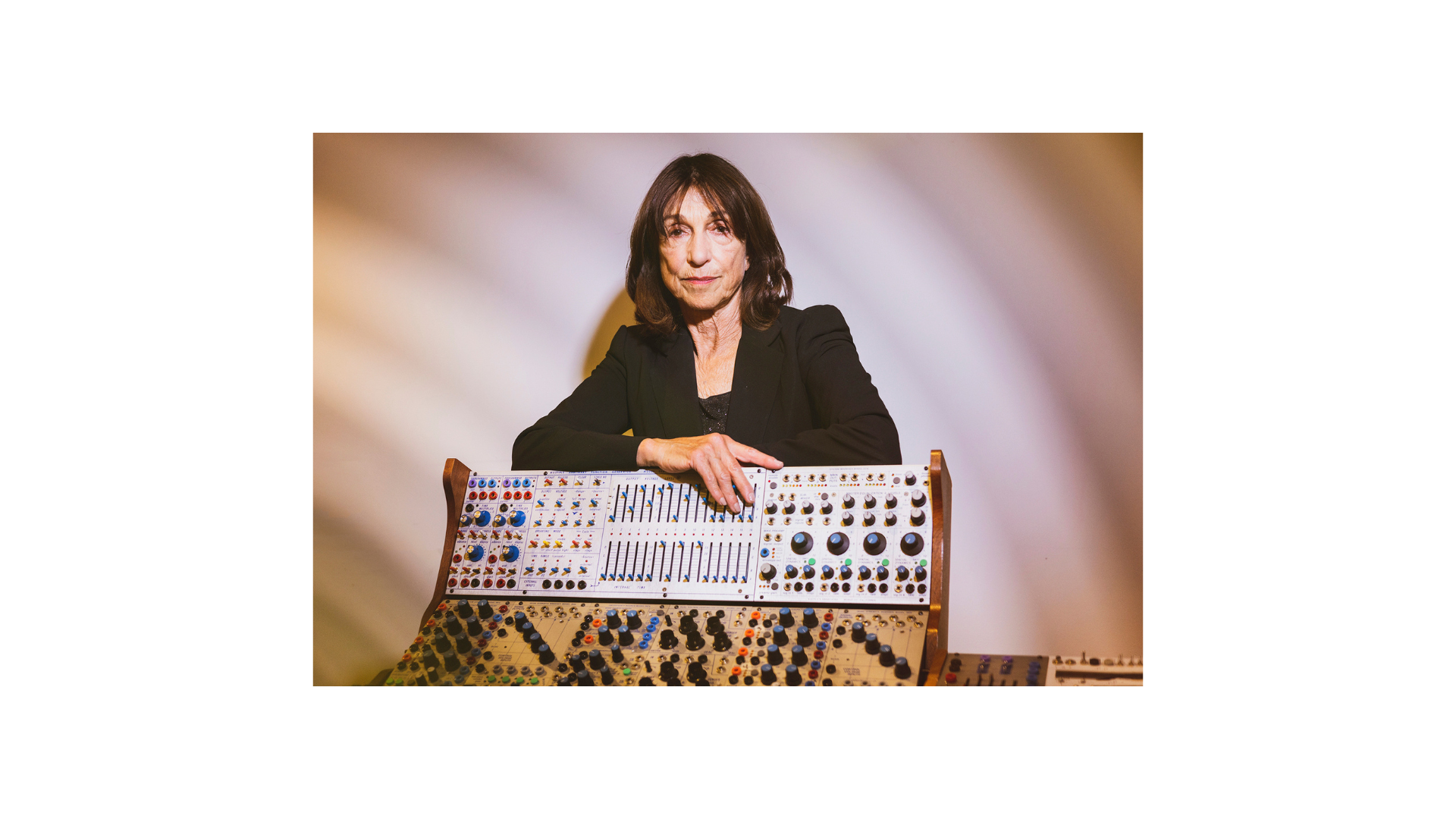
Suzanne Ciani. Source: Katja Ruge
LAURIE SPIEGEL
Perhaps the most incredible thing about Laurie Spiegel (1945 - present) is that her music could be the first sound of human origin to have been heard by aliens. That is, of course, if they have ears capable of hearing.
Spiegel’s computer based composition, originally conceived by the 17th century German astronomer Johannes Kepler, is the opening track on the Golden Record, a collection of sounds that accompanied both Voyager probes on their journey across the solar system & beyond in 1977. Also included in this collection is 90 minutes of music, greetings in many languages, animal sounds, and the EEG brainwaves of a young woman in love. However, “Harmonices Mundi“ (“Harmony of the World“), the Spiegel/Kepler piece, might well be our best bet for communicating with any potential extraterrestrials since it is based on the universal language of mathematics.
In 1973, Spiegel started working at Bell Labs, learning to program the giant computers of that era. Discussing the process of making music, she describes, “You got certain hours when you had access to the machines, and when your two-hour session was over, you’d have to rip down your synth patches and somebody else would take over… They’d scramble your settings and you’d never get them back exactly the same. So you had to grab the sounds and get them on tape, and there you were limited in terms of multi-tracking. It really was obstinate technology, and you had to work hard to get music out of it.”
She later worked with Buchla and Electronic Music Laboratories on many synthesizers and, subsequently, many early, often experimental and prototype-level music and image generation systems, including GROOVE system (1973–1978), which stands for Generated Realtime Operations On Voltage-controlled Equipment.
Known for using interactive and algorithmic logic as part of the compositional process, she composed her iconic album ‘The Expanding Universe’ in 1980, but her best known and most widely used software was Music Mouse — an Intelligent Instrument (1986) for Macintosh, Amiga, and Atari computers. The “intelligent-instrument” designation refers to the program’s built-in knowledge of chord and scale convention and stylistic constraints.
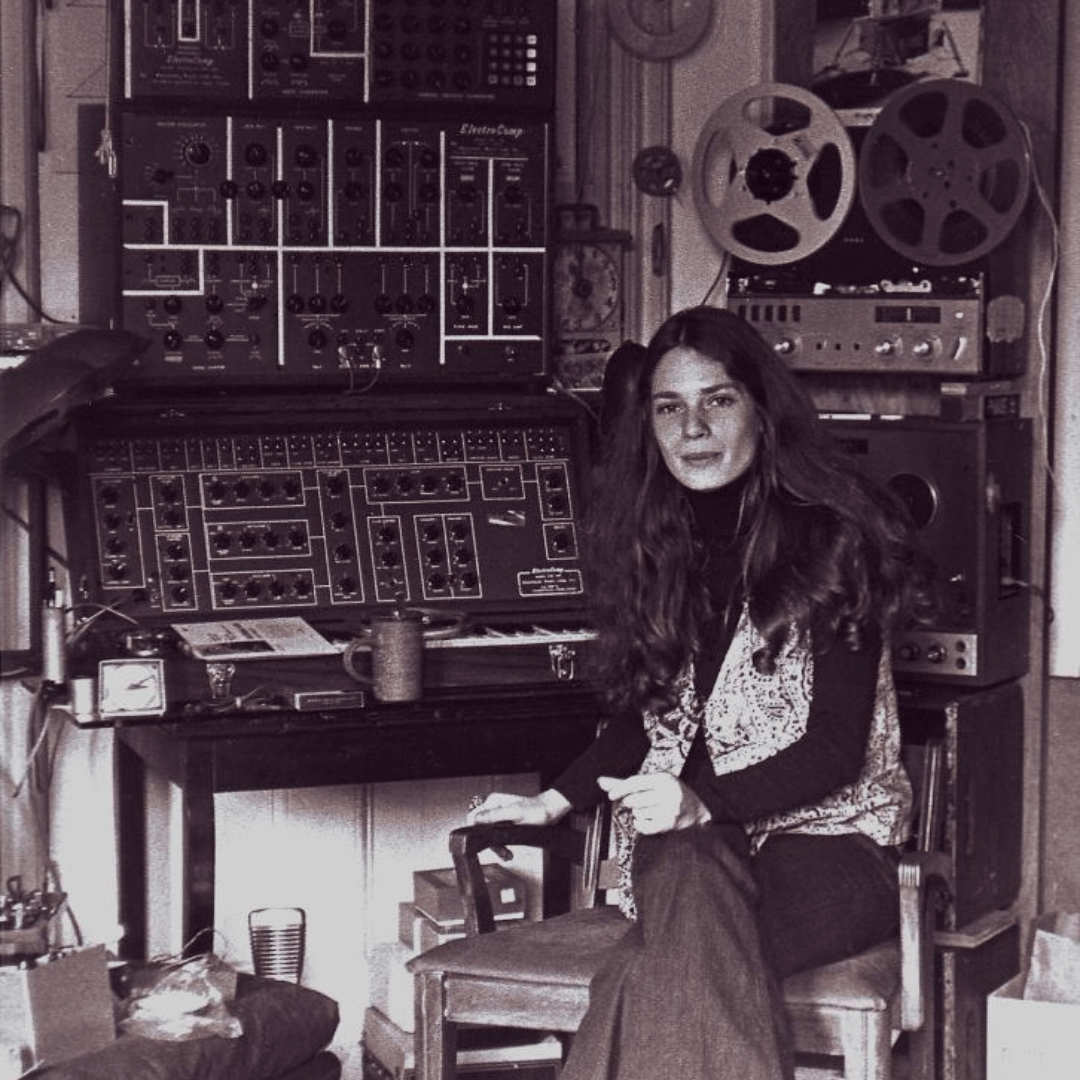
Laurie Spiegel. Source: Stan Bratman
Similar content
The Recordist: Building a Sound Library
by Laurens Lammers
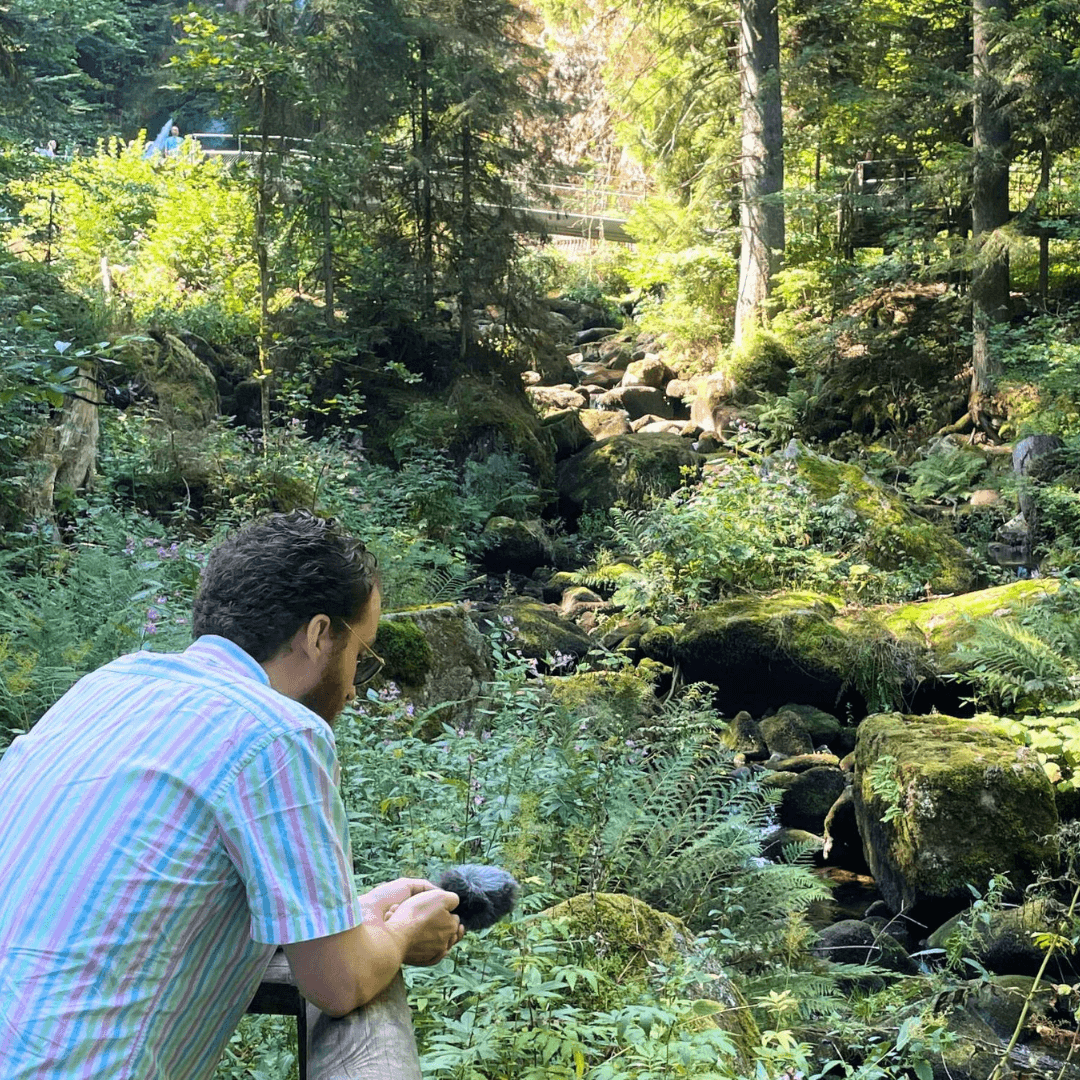
Collaborative Composition: Method & Madness
by Wilson Brown, Rory White, Jenn Fife, Sue Lee, Yuta Endo
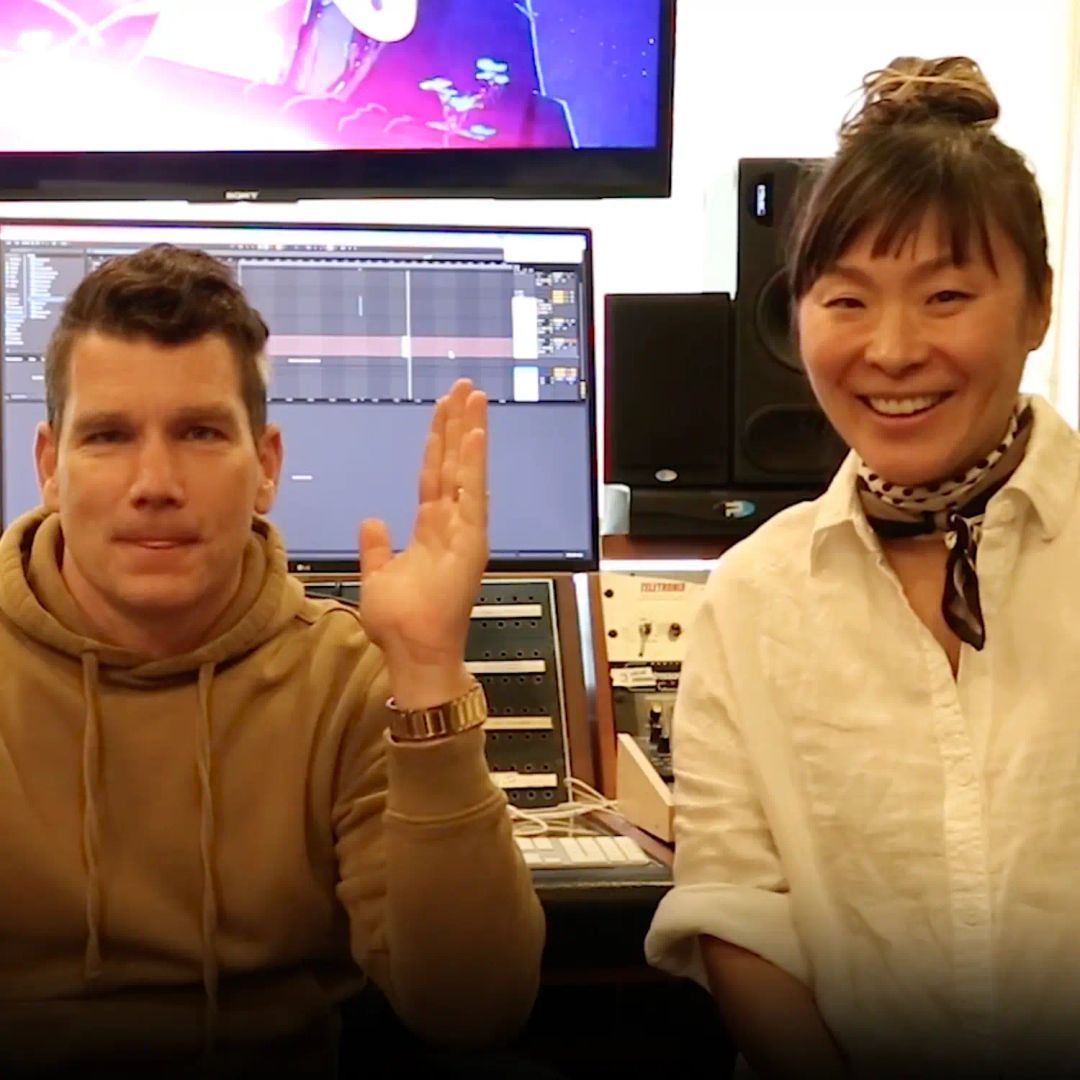
A Deeper Dive into The Hammond Organ
by Charlie Blasberg

